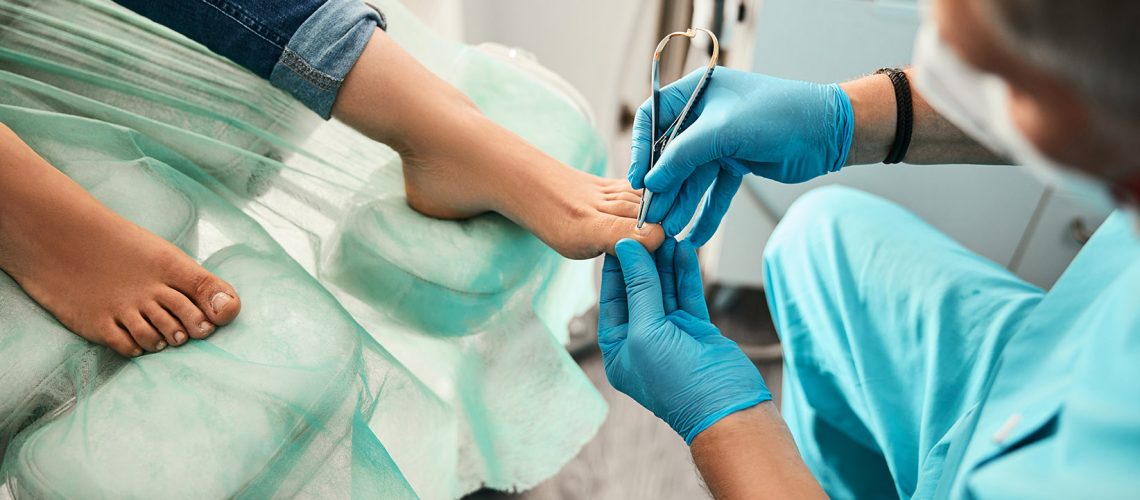Nail surgery is a common and effective treatment for painful ingrown toenails that are not resolving with conservative care.
An ingrown toenail arises when the nail edge is damaged, and the nail no longer fits properly into the side groove. The nail curls downward and digs into the skin, causing discomfort, swelling, redness, and drainage.
There are many things that can cause ingrown nails, but the two most common are shoes that don’t fit right and nails that aren’t cut properly. When shoes are too tight, they press on the side of the nail and change how it fits in the groove. When nails are peeled off or torn, the edge of the nail can go down into the corner of the nail groove. A torn nail can irritate the skin next to it, causing inflammation (swelling, pain, and redness) and sometimes an infection.
The best way to avoid getting an ingrown nail is to keep your nails trimmed well. Nails should be cut in a straight line, with the corners sticking out of the end of the toe.
During surgery to remove an ingrown nail, a small piece of the side of the nail is cut off and the nail bed underneath is destroyed. A medicine that makes the toe numb is injected, and the toenail is cut to make a new, straight edge. The cells under the nail will try to grow a new nail, so they have to be destroyed. This makes the nail thinner. If tissue has grown too much on the side of the toe this may be cut away too. The toe is then wrapped in a bandage until it is fully healed, which typically takes a couple of weeks.
On the day of surgery, you should keep your foot up for a few hours and rest. The next day, you can go back to work or school. You shouldn’t run or do other strenuous activities for 2 weeks after surgery.




